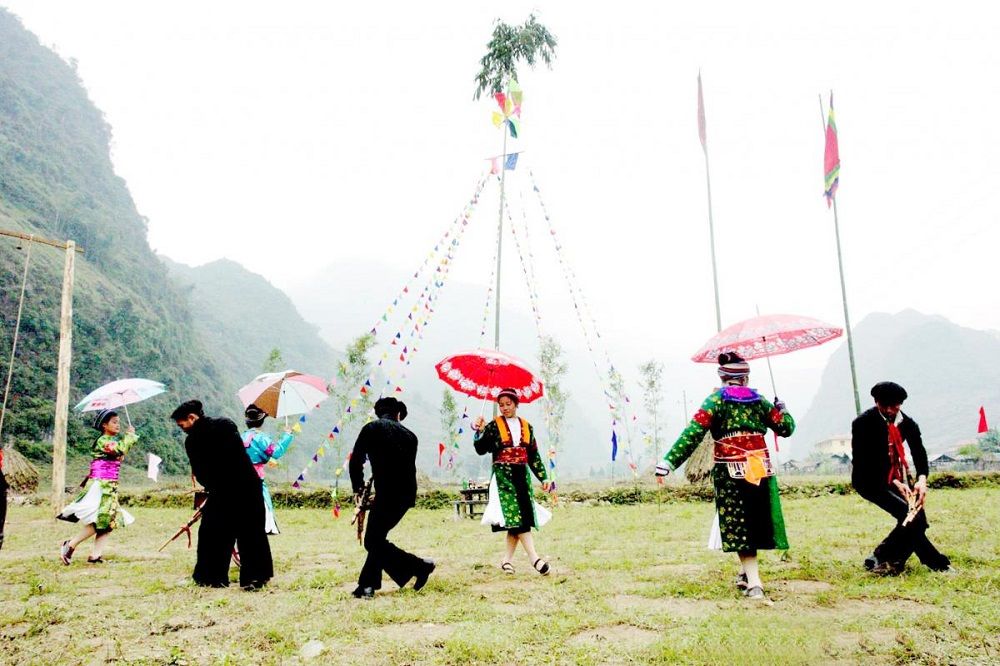Exploring Hmong Traditions: An Immersive Experience in Ha Giang
Introduction to the Hmong Culture
Hidden amidst the breathtaking landscapes of Ha Giang, Vietnam, lies a vibrant and colorful culture belonging to the Hmong people. This ethnic minority group is known for its rich traditions, distinctive clothing, and a deeply rooted connection to nature. Exploring these traditions offers an immersive experience that delves into a unique way of life.

The Traditional Hmong Attire
The Hmong people are easily recognizable by their traditional attire, which reflects their identity and heritage. Each piece of clothing is hand-crafted, featuring intricate embroidery and distinctive patterns. These garments are not just clothing; they are a storytelling medium, representing family lineage and cultural stories. When visiting Ha Giang, witnessing the vibrant attire of the Hmong is a visual delight.
Men typically wear indigo-dyed suits with silver accessories, while women don brightly colored skirts, aprons, and headdresses adorned with coins and beads. These garments aren't just for show; they play a role in various ceremonies and are an essential part of daily life.
Exploring Hmong Festivals
Festivals are a cornerstone of Hmong culture, offering a glimpse into their spiritual and communal life. The most significant festival is the New Year celebration, which features traditional music, dance, and rituals. It’s a time for families to come together, pay respects to ancestors, and prepare for the upcoming year.

Visitors to Ha Giang during these festivals can partake in the celebrations, enjoying traditional dishes and observing age-old customs. The festivals are not only about festivity but also about preserving cultural heritage for future generations.
Hmong Handicrafts: A Testament to Skill
Hmong handicrafts are renowned for their exquisite craftsmanship and creativity. From embroidery to silverwork, each item is a labor of love that reflects the skills passed down through generations. The art of batik dyeing is particularly unique, where wax is applied to fabric before dyeing to create intricate patterns.
Visiting local markets provides an opportunity to see these artisans at work and purchase handmade items directly from them. By doing so, visitors support the local economy and help preserve these traditional skills.

Culinary Delights of the Hmong
The culinary traditions of the Hmong people are as rich and varied as their culture. Meals are often prepared using fresh ingredients sourced from local farms. Sticky rice is a staple, served alongside dishes like grilled meats, spicy salads, and herbal soups.
Participating in a traditional Hmong meal offers insight into their communal lifestyle. Meals are typically shared among family and guests, fostering a sense of community and togetherness.
The Connection to Nature
The Hmong people have a profound connection to nature, which is evident in their farming practices and spiritual beliefs. Rice terraces meticulously carved into the mountainsides showcase their agricultural ingenuity. They also practice sustainable farming techniques that have been refined over centuries.

Respect for nature is deeply ingrained in their spiritual beliefs, often reflected in ceremonies that honor natural elements and spirits. This harmonious relationship with the environment is integral to Hmong identity and survival.
Conclusion: A Journey Worth Taking
Exploring Hmong traditions in Ha Giang offers travelers an enriching experience that combines cultural discovery with breathtaking natural beauty. By immersing oneself in the daily lives of the Hmong people, visitors gain a deeper appreciation for their resilience and cultural richness.
Whether you're drawn by the colorful attire, the vibrant festivals, or the stunning landscapes, Ha Giang provides a unique opportunity to connect with one of Vietnam's most fascinating ethnic groups. The journey is not only about discovering a new culture but also about understanding the universal themes of family, tradition, and connection to nature.
